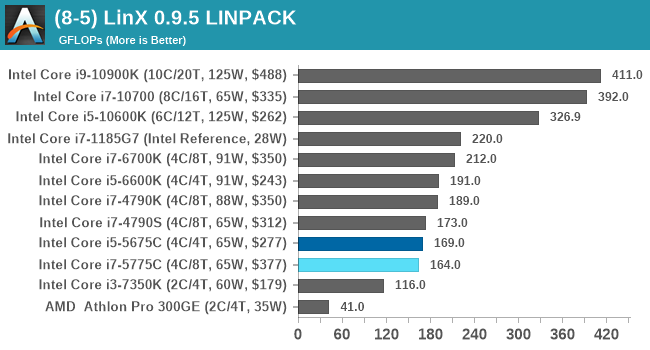

The result is reported in millions of floating point operations per second (MFLOP/s, sometimes simply called FLOPS). The solution is obtained by Gaussian elimination with partial pivoting, with 2/3 Introduced by Jack Dongarra, they measure how fast a computer solves a dense N by N system of linear equations Ax = b, which is a common task in engineering. In: 10th international workshop on feedback computing.The LINPACK Benchmarks are a measure of a system's floating point computing power. Zhang H, Hoffmann H (2015) A quantitative evaluation of the RAPL power control. Wilde T, Auweter A, Shoukourian H, Bode A (2015) Taking advantage of node power variation in homogenous HPC systems to save energy. In: International conference for high performance computing, networking, storage and analysis (supercomputing). Scogland T, Azose J, Rohr D, Rivoire S, Bates N, Hackenberg D (2015) Node variability in large-scale power measurements: perspectives from the Green500, Top500 and EEHPCWG. In: Parallel and distributed processing symposium workshops (IPDPSW). Rountree B, Ahn DH, De Supinski BR, Lowenthal DK, Schulz M (2012) Beyond DVFS: a first look at performance under a hardware-enforced power bound. Rotem E, Naveh A, Rajwan D, Ananthakrishnan A, Weissmann E (2012) Power-management architecture of the intel microarchitecture code-named sandy bridge. In: Proceedings of the 3rd international workshop on energy efficient supercomputing. Pedretti K, Olivier SL, Ferreira KB, Shipman G, Shu W (2015) Early experiences with node-level power capping on the Cray XC40 platform. Optimizing performance with intel advanced vector extensions: Intel Corporation (2014) Intel Corporation: Intel Xeon Processor E5 v3 Product Familiy. In: International parallel and distributed processing symposium workshop (IPDPSW). Hackenberg D, Schöne R, Ilsche T, Molka D, Schuchart J, Geyer R (2015) An energy efficiency feature survey of the intel Haswell processor. Hackenberg D, Oldenburg R, Molka D, Schöne R (2013) Introducing FIRESTARTER: a processor stress test utility. In: Energy efficient supercomputing workshop (E2SC). Hackenberg D, Ilsche T, Schuchart J, Schöne R, Nagel W, Simon M, Georgiou Y (2014) HDEEM: high definition energy efficiency monitoring.
#Linpack benchmark avx software
In: International symposium on performance analysis of systems and software (ISPASS). Hackenberg D, Ilsche T, Schöne R, Molka D, Schmidt M, Nagel W (2013) Power measurement techniques on standard compute nodes: a quantitative comparison. In: Proceedings of the 40th annual design automation conference. doi: 10.1109/MM.2005.110īorkar S, Karnik T, Narendra S, Tschanz J, Keshavarzi A, De V (2003) Parameter variations and impact on circuits and microarchitecture. Since all of these controls are transparent to the user, this behavior is likely to complicate performance analysis tasks and impact tightly coupled parallel applications.īorkar, S.: Designing reliable systems from unreliable components: the challenges of transistor variability and degradation.
#Linpack benchmark avx full
In contrast, our measurements on a Petaflop Haswell system show that this generation exhibits rather homogeneous power consumption limited by the TDP and capped by the improved RAPL while providing inhomogeneous performance under full load. Through measurements on an Intel Sandy Bridge-EP cluster, we show that previous generations have sustained homogeneous performance across multiple CPUs and compensated for hardware manufacturing variability through varying power consumption. The combination of these two novelties have significant implications. Moreover, the running average power limitation (RAPL) mechanism to enforce the TDP limitation has changed from a modeling to a measurement approach. For computationally intense applications using advanced vector extension instructions, the processor cannot continuously operate at full speed but instead reduces its frequency below the nominal frequency to maintain operations within thermal design power (TDP) limitations. The Intel Haswell-EP processor generation introduces several major advancements of power control and energy-efficiency features.


 0 kommentar(er)
0 kommentar(er)
